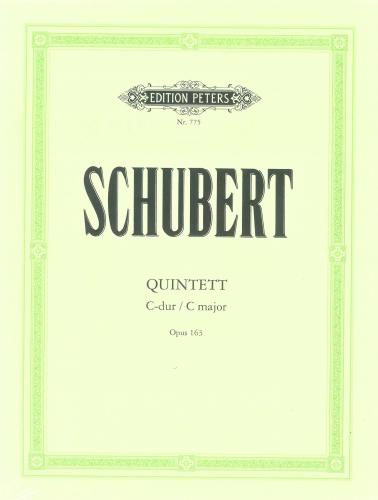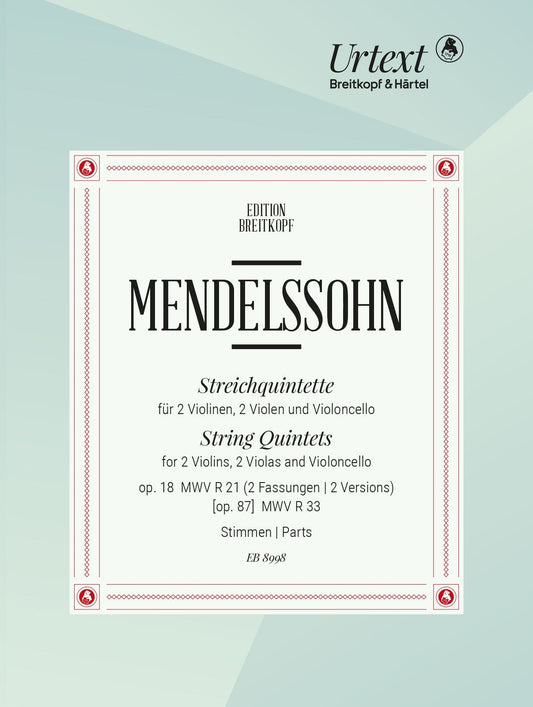-
Schubert String Quintet C Maj Op163 PET
Regular price £24.95Regular priceUnit price / per -
Mendelssohn String Quintets Parts EB
Regular price £35.99Regular priceUnit price / per
Collection: Sheet Music: String Quintet
Sheet music for string quintet refers to compositions written for an ensemble of five string instruments, typically consisting of two violins, one viola, and two cellos. This expanded version of the string quartet offers a richer texture and more complex harmonic possibilities due to the additional voice.
History:
-
Origins: The string quintet began to emerge in the Classical period, though it was less common than the string quartet. The form gained popularity in part because of its ability to offer a fuller, more sonorous sound. Luigi Boccherini was one of the first composers to write extensively for string quintets, particularly featuring two cellos, creating a unique and resonant blend.
-
Classical Era: The string quintet continued to be developed by composers like Joseph Haydn, who wrote a few quintets for two violas, enriching the texture of the group. However, it was Wolfgang Amadeus Mozart who truly solidified the string quintet as a respected form, particularly with his String Quintets K. 174, K. 406, and the celebrated String Quintet in C major, K. 515.
-
Romantic Era: In the 19th century, composers like Felix Mendelssohn and Johannes Brahms contributed significantly to the genre, creating more expressive and technically demanding works. Brahms, for instance, wrote his String Quintet in F major, Op. 88, which is regarded as one of the great masterpieces of the genre.
-
20th Century: Composers such as Dmitri Shostakovich and Benjamin Britten further pushed the boundaries of the string quintet, experimenting with more dissonant harmonies, unusual rhythms, and new forms of expression. Shostakovich’s String Quintet in G major, Op. 57 is particularly notable for its depth and intensity.
Today, the string quintet remains a cherished ensemble form in both classical and contemporary music, continuing to offer composers an opportunity for rich, intricate writing with expanded harmonic and melodic possibilities.


